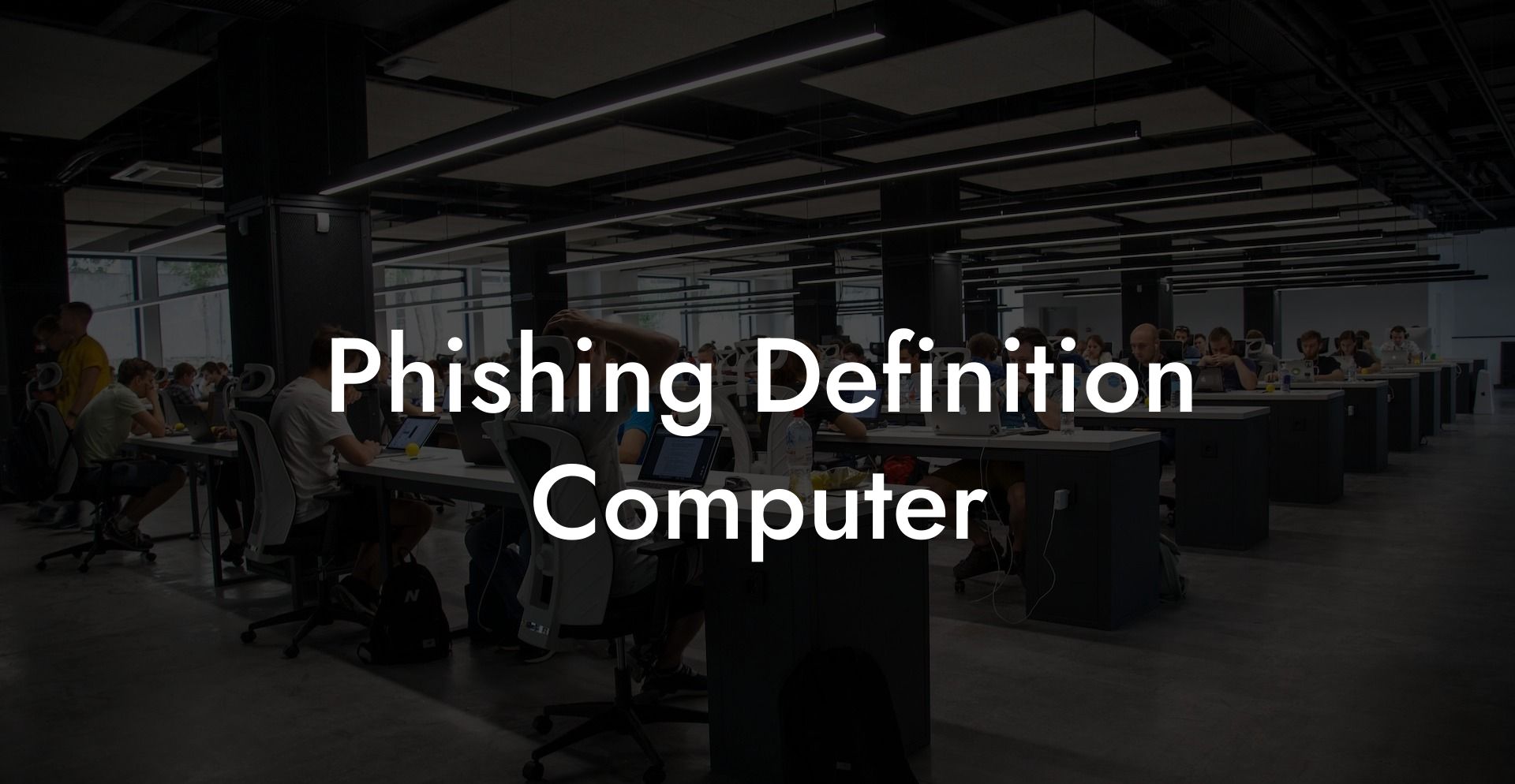Today's online landscape has brought many conveniences and benefits to our daily lives, but it also comes with an array of potential threats. One of the most common and dangerous cyber threats we face is phishing attacks. Essentially, phishing is a form of cybercrime that targets individuals and organizations alike, tricking them into revealing sensitive information. In this article, we will delve deeper into the phishing definition computer, examine real-life scenarios, and explore ways to defend against them. So, let's get started with understanding what phishing is and how it operates.
Phishing Definition Computer Table of Contents
Phishing is a cyber attack method that fraudulently seeks to obtain sensitive information such as login credentials, credit card numbers, and other personal data by disguising as a trustworthy entity. The attacker typically uses fake emails, instant messaging, or other communication tools to contact the victim and lure them into clicking on malicious links, downloading harmful software or revealing sensitive information.
Protect Your Data Today With a Secure Password Manager. Our Top Password Managers:
There are several types of phishing attacks that target both individuals and organizations:
1. Email phishing
This is the most common form of phishing where attackers send fraudulent emails to a vast number of recipients. These emails often imitate reputable institutions such as banks or government agencies, and they generally contain a sense of urgency, asking recipients to update their account information or confirm their identity.
2. Spear phishing
Unlike email phishing, spear phishing targets specific individuals or organizations by tailoring the attack based on available information about the target. These attacks often appear to come from a trusted source, such as a colleague or a known vendor.
3. Whaling
This type of attack focuses on high-profile targets like executives, politicians, or leaders of organizations. Whaling attacks utilize a similar approach to spear phishing but with the goal of accessing valuable and sensitive information within an organization.
Phishing Definition Computer Example
Imagine receiving an email from your bank, stating that there has been suspicious activity on your account and urging you to click a link to verify your personal information. The email looks legitimate, complete with the bank's logo and even a disclaimer notice. However, upon closer inspection, you notice minor discrepancies such as the sender's email address or the URL of the provided link. This is a classic example of a phishing email.
In conclusion, phishing attacks continue to be a significant threat to individuals and organizations as they exploit the human element of trust, making it essential to stay informed and vigilant. Always be cautious with unsolicited messages, verify the sender's information, and never provide sensitive data without confirming the request's legitimacy. By understanding the phishing definition computer, you become better equipped to safeguard your sensitive information and protect your online presence effectively.
We encourage you to share this post with friends and colleagues to spread awareness about phishing attacks, and together, we can promote a safer online environment. Be sure to check out other guides and resources available on Voice Phishing for more in-depth information and practical tips to further strengthen your cybersecurity knowledge.
Protect Your Data Today With a Secure Password Manager. Our Top Password Managers:















